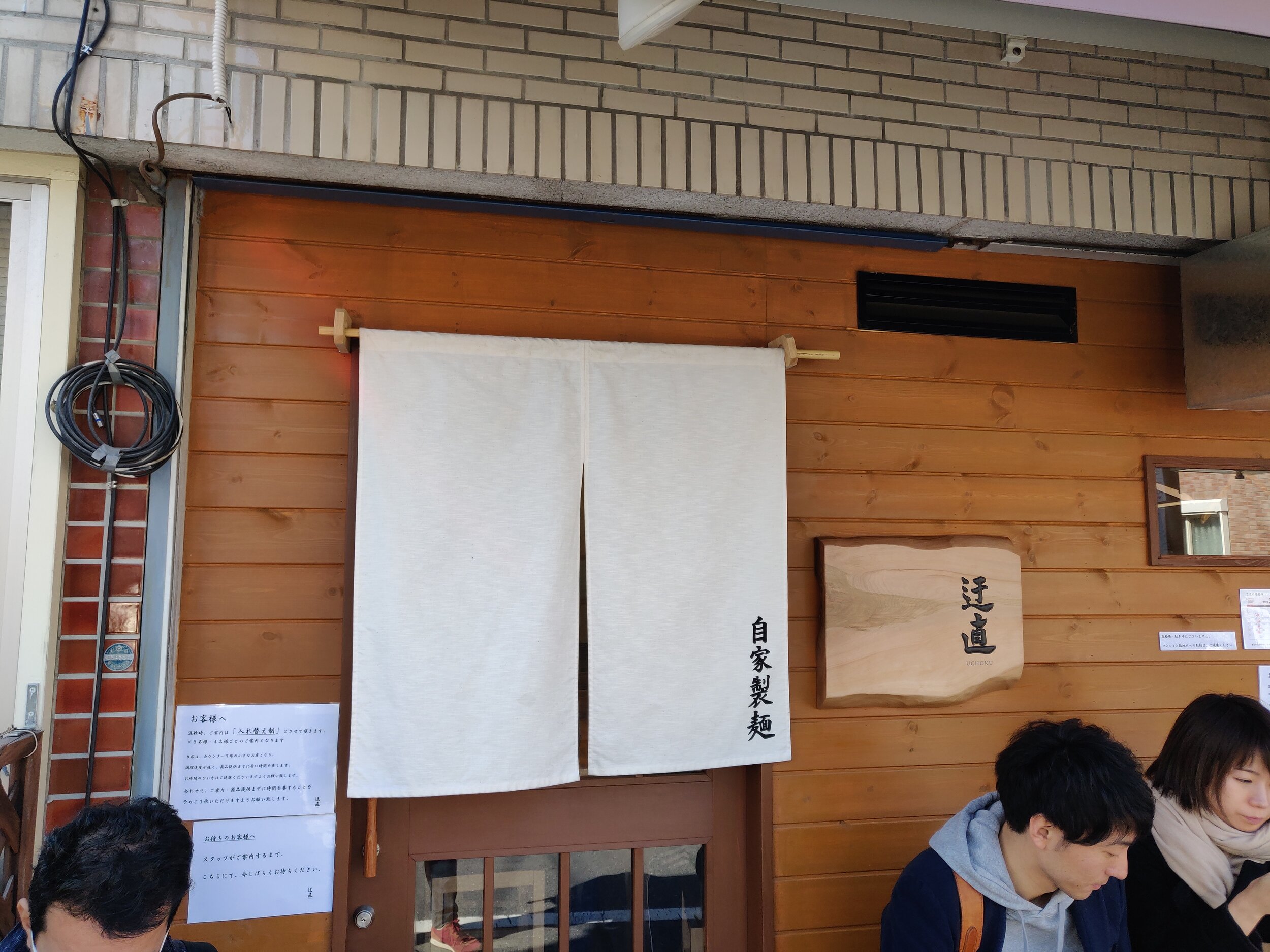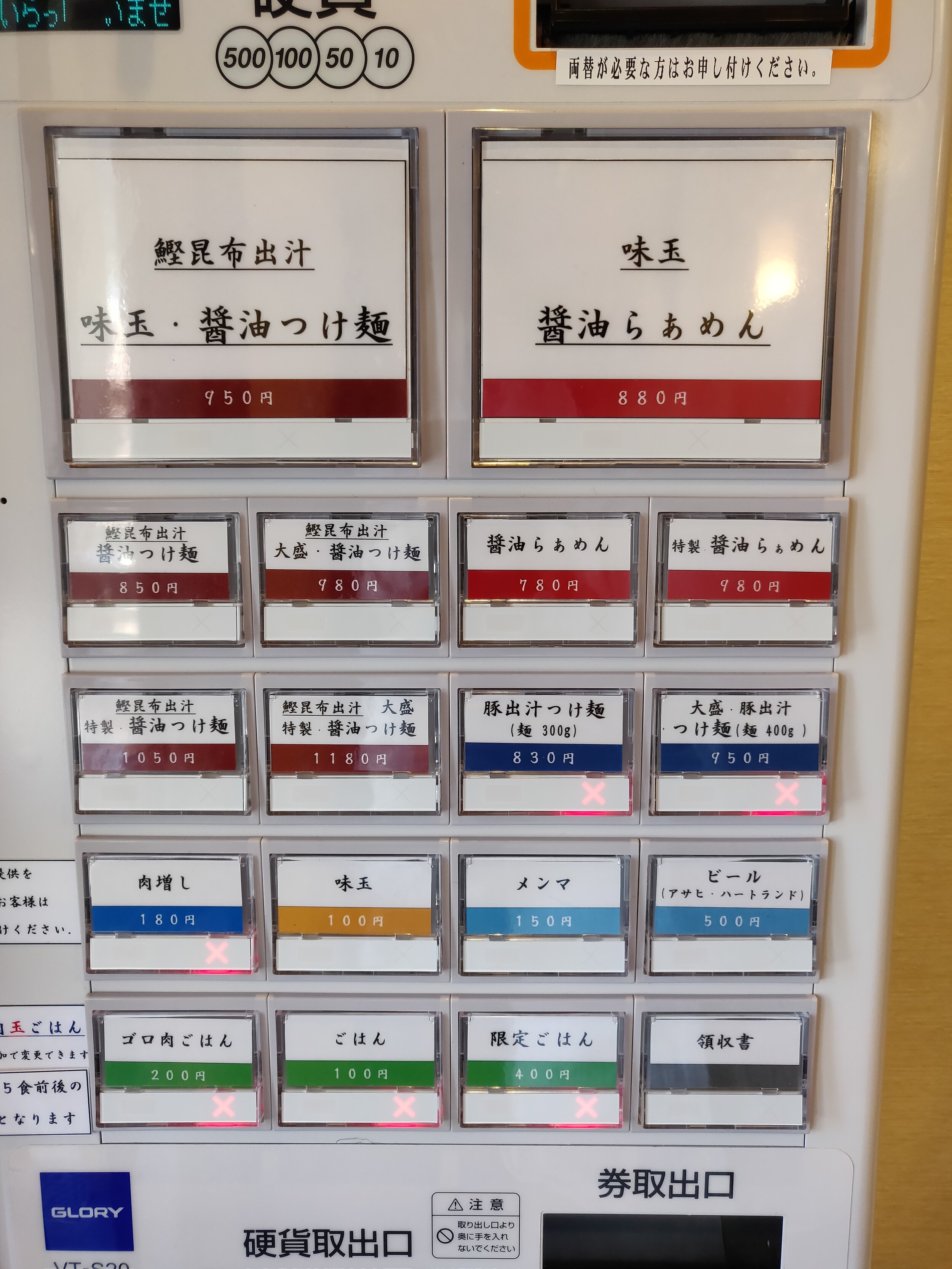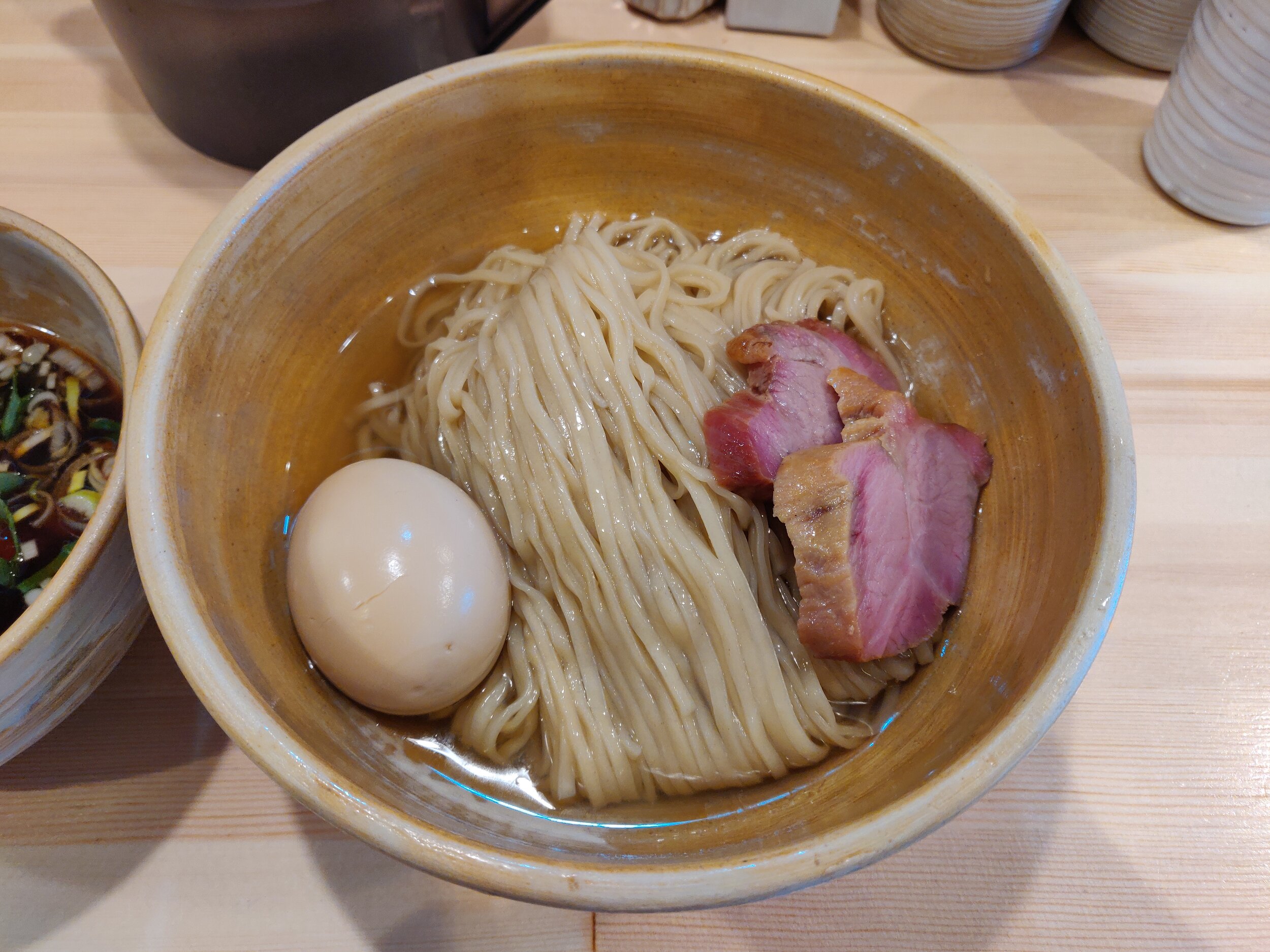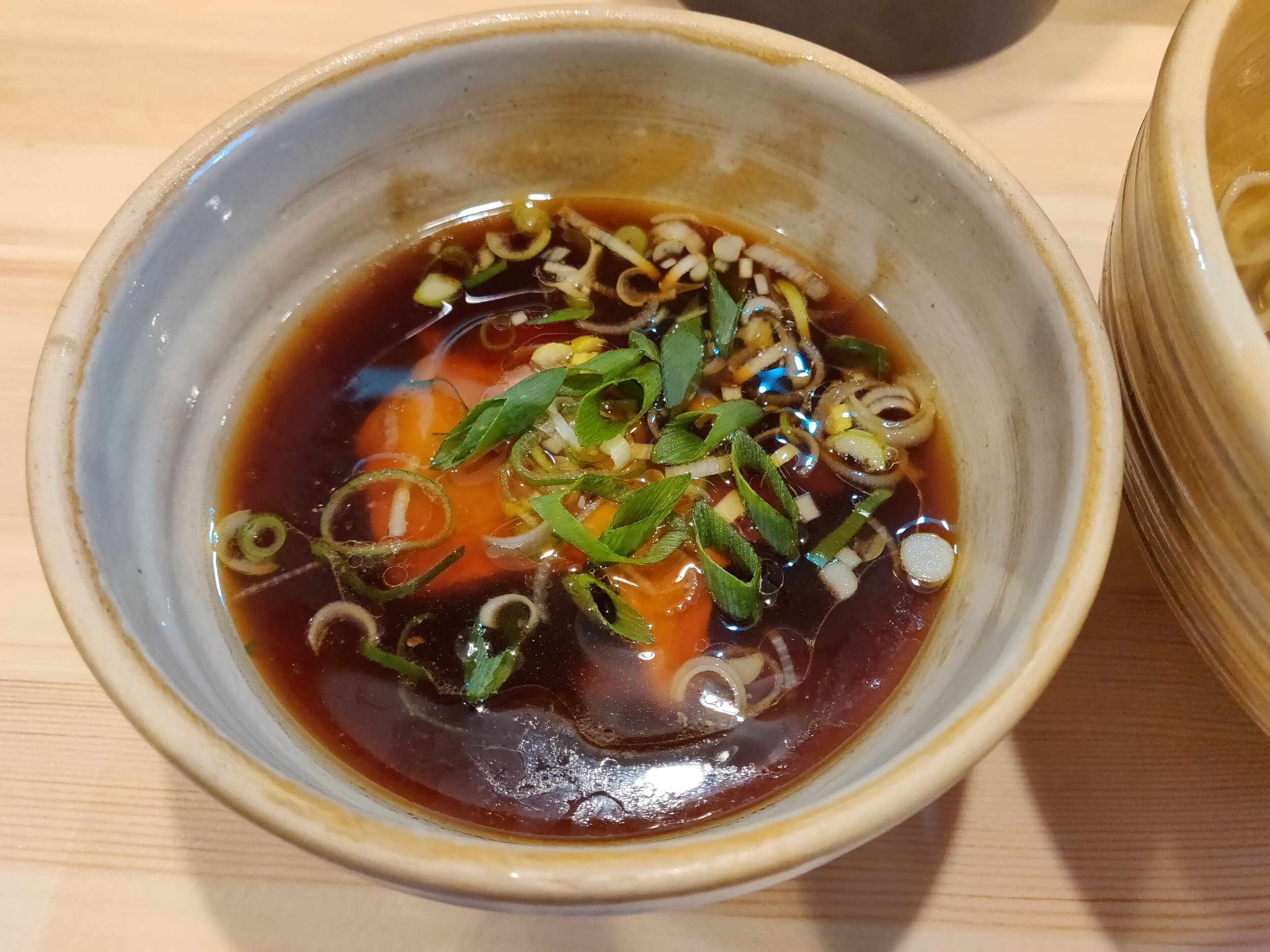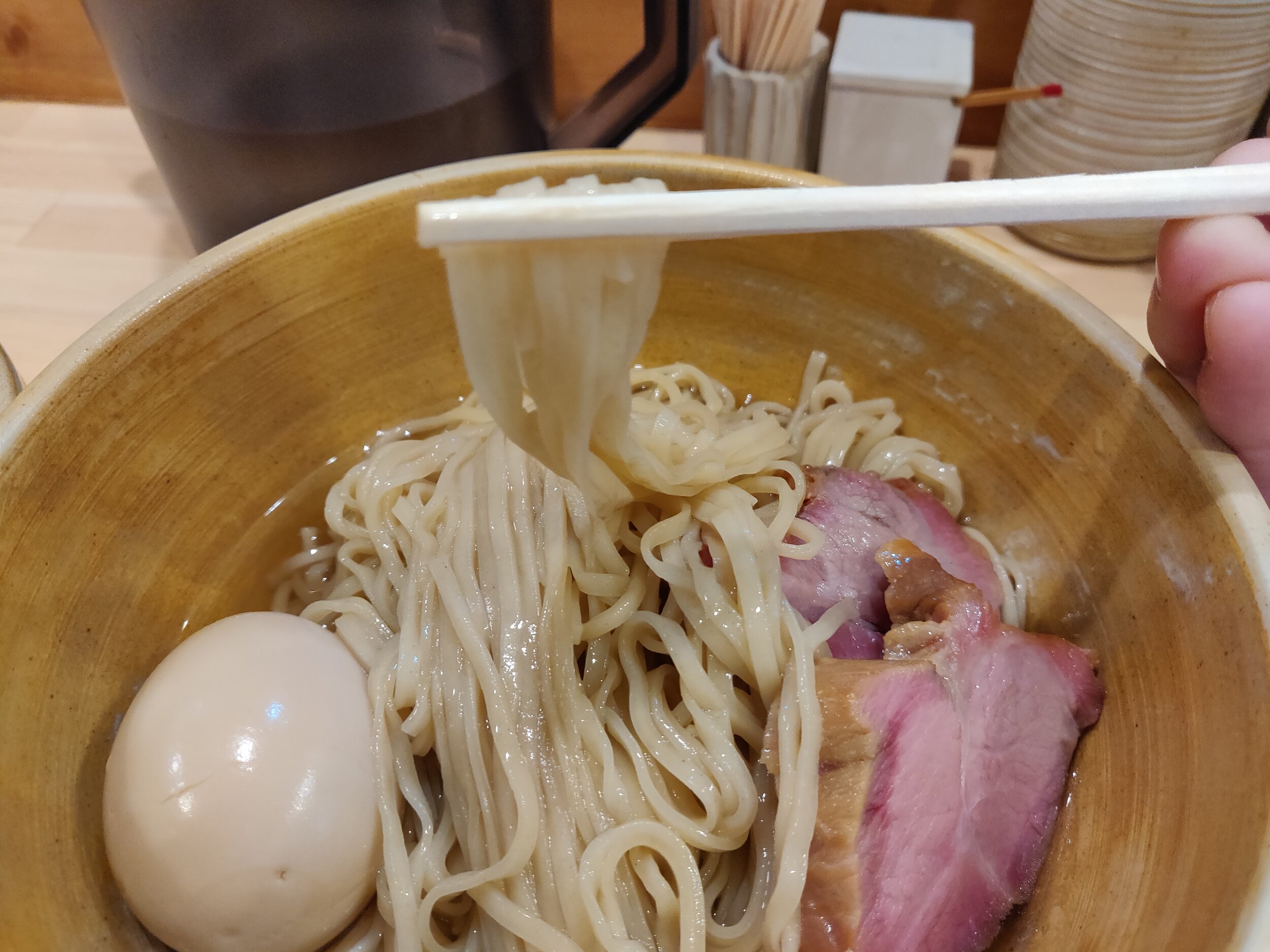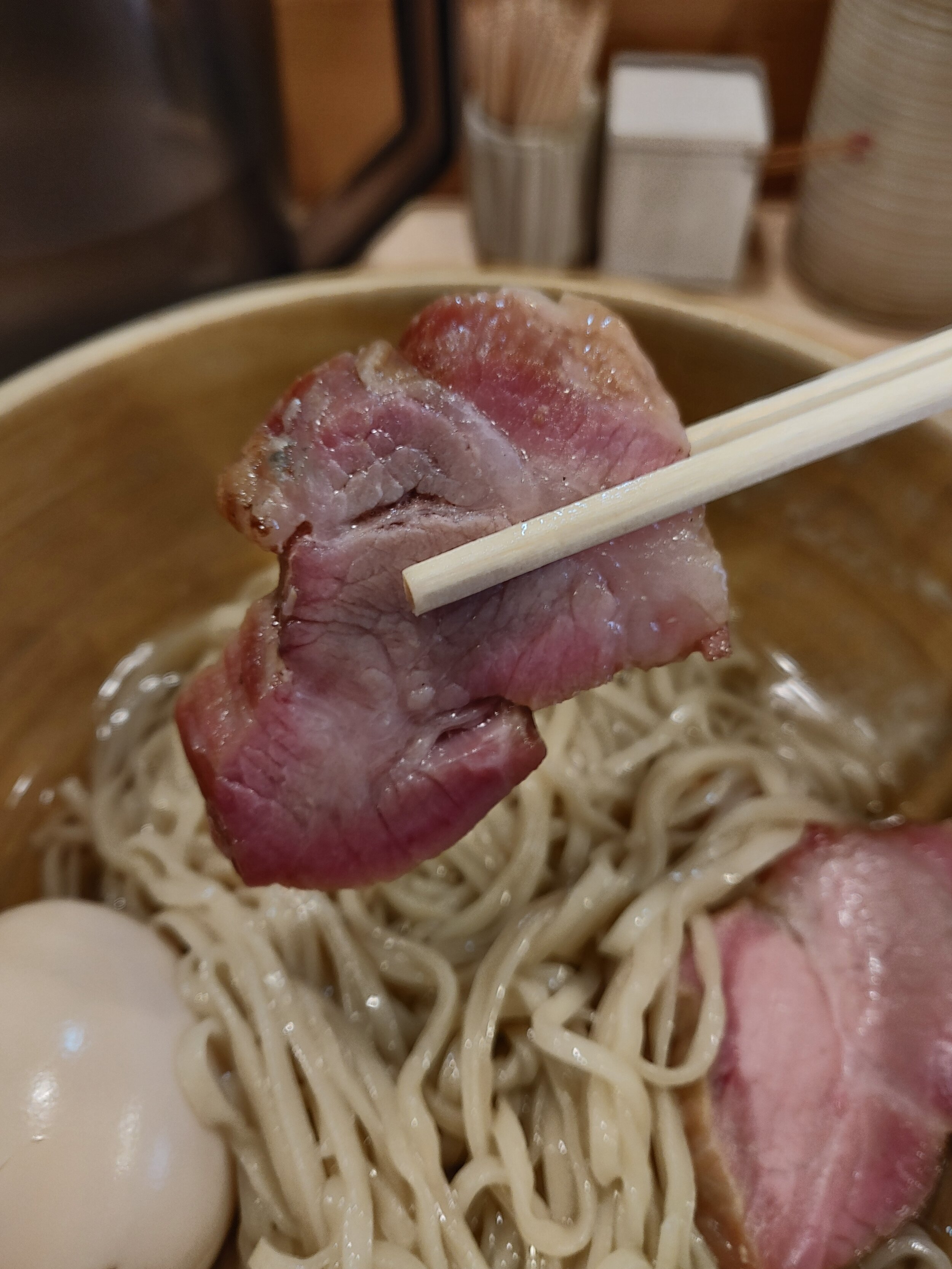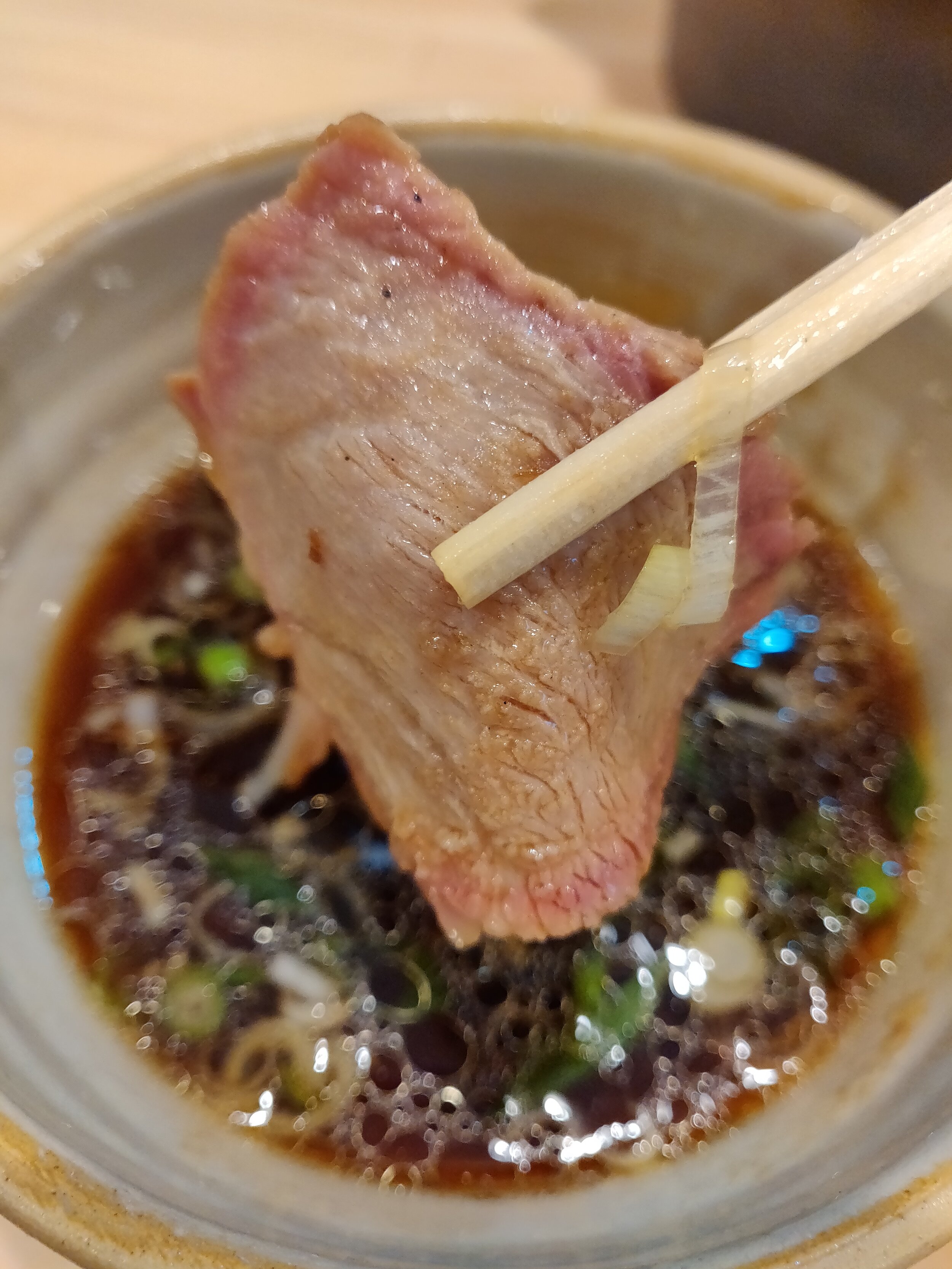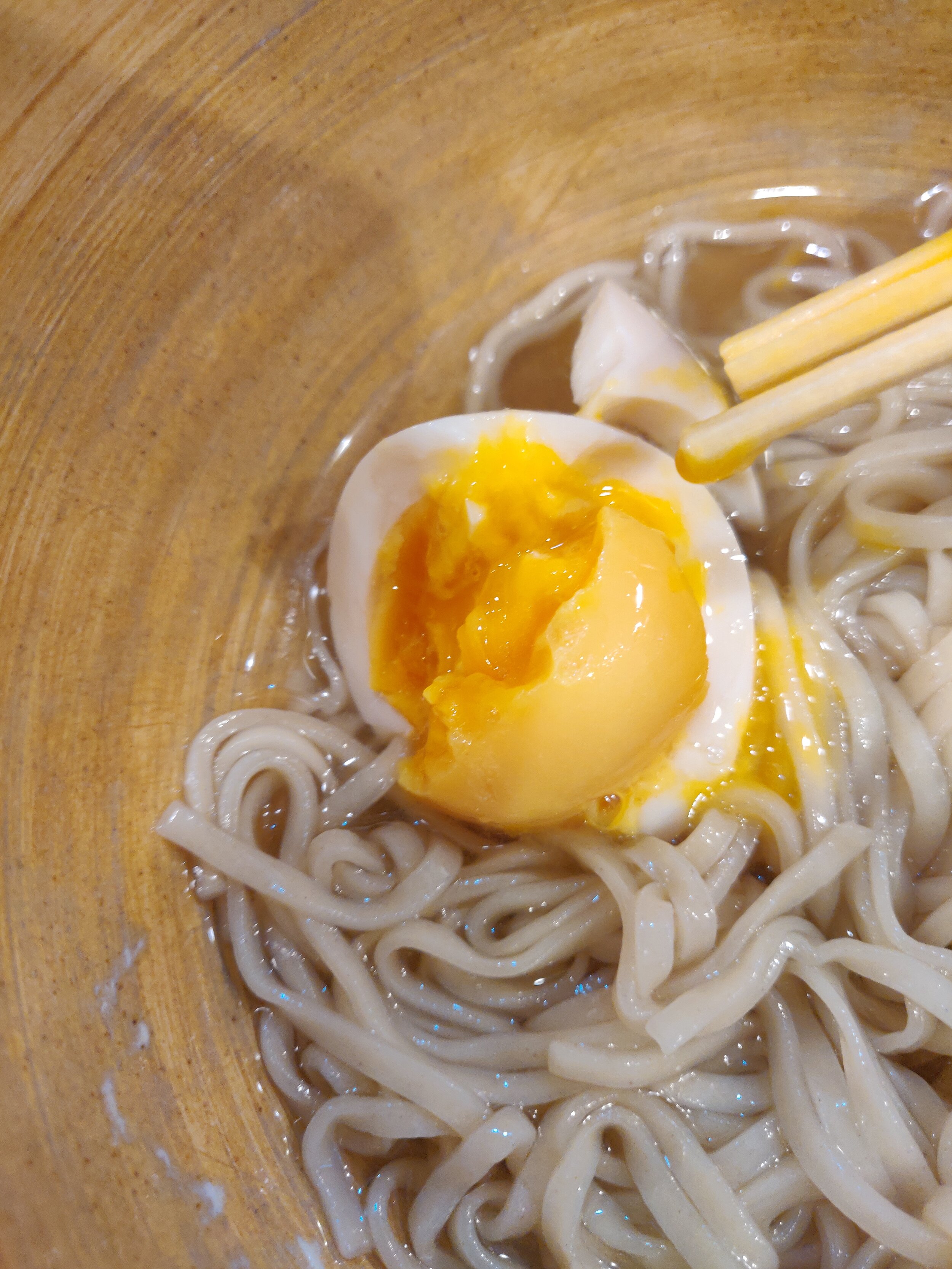Uchoku (迂直); Next Michelin Star Ramen?; Ogikubo, Tokyo
On my trips around Japan, consuming whatever ramen bowl I can find, I’m always separating them in to three major categories; local, franchise, or recognition. What these categories typically mean is whether or not I believe the shop is staying local to please neighborhood customers, franchising in which they are looking to expand their shop whether it be by making more similar shops or opening new brand ramen restaurants, or aiming for recognition from publications such as tabelog or the Michelin Guide. Now, of course, this leads to a Venn Diagram situation in which some shops will overlap between the three, but for the most part, I like separating them in to these three groups so I organize my thoughts and impression on the ramen by keeping in mind what their likely goal for the restaurant is. For example, no point in judging a restaurant to a high Michelin Star standard if all they’re doing is making good, enjoyable ramen for the neighborhood crowd. Now Uchoku, located a short distance from Ogikubo station, had me already in the recognition mindset as the shop was getting a lot of hype before they served their first bowl. Chef here at Uchoku trained alongside the chef over at Homemade Ramen 麦苗 before they both went their own way to open their respective restaurants. Philosophy for both chefs were simple, make a delicious, somewhat healthy ramen that packs a ton of flavor, and both shops do exactly that.
So much like a lot of the shops that have opened within the past year, they of course, didn’t expect many foreign clientele to be dining at their shop. Of course, I’m not one to let my readers go confused as to what to order, so here is my translation of the ticket machine and in turn, their menu. Thankfully Uchoku color-coded their menu so I’ll describe them by their color groups. First up is the dark maroon group starting with the biggest button and then going in order of price. Big button is for their Shoyu Tsukemen in Konbu Bath with a Soft Boiled Egg, regular version without the egg, Oomori or extra noodles version, Tokusei version with all additional toppings, and finally Tokusei Oomori. The red buttons are for the Shoyu Ramen and starting with the big button is the Ajitama Shoyu Ramen which includes a soft boiled egg, regular Shoyu Ramen, and Tokusei Shoyu Ramen with all the extra fixings. The dark blue button below it is the Pork Broth Tsukemen and Oomori Pork Tsukemen. Blue button on the left is for extra pork, yellow is for the soft boiled egg, light blue is menma bamboo shoots on the left and beer (Heartland) on the right. Finally the green button is the pork char siu over rice, regular rice, and specialty rice set in order from left to right. Menu is quite simple, but still has a lot of varieties to keep you coming back to try more. The Shoyu Tsukemen in the Konbu bath is the most popular and well regarded menu item, so I would suggest you start there and come again for the others (or order them now and try multiple in one sitting). I opted for the Shoyu Tsukemen and was hoping for the pork char siu over rice, but alas it was sold out by the time it was my turn in the queue. I definitely recommend coming here early as the buzz around this shop on twitter had attracted quite the number of patrons, and even more will likely be joining as word spreads. In my experience, with shops this popular, I recommend coming at least 30 minutes before opening or suffer an even longer wait when you arrive later. Uchoku is open, for the most part Monday through Friday from 11:30 to 15:00 with weekend and holiday hours of 11:30-16:00. Every month they post their holiday schedule on their twitter here so check in before you leave so you know whether or not they’re open that day.
Pictured is my order for the day and I opted for the Shoyu Tsukemen in Konbu bath with the soft boiled egg. First off, the visuals here are fantastic. Not only is the ramen here beautifully presented, the aesthetic of the restaurant was phenomenal. I really wish I could show you the rest of the shop, but the owner had a pretty strict no photo policy besides the ramen, so even sneaking a picture of the ticket machine had me a tad worried. Anyways, on to the ramen. So the concept of the tsukemen is leaning towards the style of Taishoken in that its a less emulsified, chintan soup rather than the more trending Tonkotsu Gyokai style that a ton of tsukemen shops are producing. Noodles are on the thinner side, which you’d expect from these thinner tsukemen soups, but had that alkalinity kick which indicated, to me, a higher kansui level. If you look closely at the photo, the noodles are actually in a bath, and that is the Konbu, or Japanese kelp, bath that the name of the dish is indicating to. The concept actually isn’t that uncommon as a lot of tsukemen restaurants that serve this thinner soup will use this method to give the noodles some slipperiness, and in my opinion, to help dampen a bit of the saltiness of the dipping soup. A couple restaurants that use this idea, off the top of my head, are Shinka in Machida and KaneKitchen Noodle in Higashi Nagasaki. Placed in the bowl with the noodles were two slices of Chinese style red pork char siu and soft boiled egg. The soup had a slice of chicken char siu with both the green and white parts of the scallions chopped in. When I first received the soup, I thought it was a sauce with how incredibly dark and opaque it was, but the hue comes from the darker soy sauce they use for the seasoning tare. It was, in fact, still a chintan soup as I swirled my chopstick in to the dipping broth.
So there is in fact a recommended way of eating the tsukemen which the chef has kindly written out, all in Japanese. Of course, I didn’t leave you all hanging and I translated it for you here:
Eat just the noodles and enjoy the aromas of the wheat flour, the slippery texture, and the overall flavors of the Konbu (Japanese Kelp) bath.
The tsukemen broth will initially seem quite strong. Dip the noodles at your preferred pace.
Enjoy the combined flavors of the Konbu bath and tsukemen soup as well as the char siu and scallions.
As the intensity of the tsukemen broth lowers, enjoy the flavors of the chicken and niboshi which will begin standing out.
If any of the Konbu bath remains in your plate after finishing the ramen, pour the rest in to the tsukemen broth and enjoy the combined soup.
So now that we have the recommended eating procedures down, lets get down to the dish. First off, the noodles. Noodles were quite dense and chewy with a great, snappy bite to them. The Konbu bath adds an interesting depth of flavor and texture as well, giving it a bit of a salty note with slippery consistency as you slurp them. Wheat flour aroma is quite strong and, just as the chef had suggested, go well on its own without the soup. The texture and flavor is akin to somen noodles if it had a higher kansui level. The tsukemen broth was as advertised; really rich in flavor and quite intense. Definitely still a chintan and not thick by any means, but the flavors do a number on your palette regardless. Noodles dipped into the soup is a match made in heaven and the absorbed konbu bath helpes dampen the intensity of the tsukemen soup just enough to have an unforgettable bite. The konbu bath also helps thicken the soup with every bite so the soup becomes palatable on its own by the end. The Chinese style red pork char siu is phenomenal and adds a bit of sweetness to the dish. The marinade definitely has some sugary notes, likely from a mirin or even rock sugar to give it some glossiness. Each slice maintains some moisture and when dipped in the tsukemen soup, absorbs a bit of its flavor making for a sweet and savory flavor combination. Scallions floating within the soup helps cut through the intensity just a bit with some fresh greens vibe while adding another texture variety to the dish. Chicken hidden within the soup really embodies the core of the tsukemen; poultry goodness. While it doesn’t necessarily add much in flavor, it resembles what the philosophy of the tsukemen is. One complaint would be the soft boiled egg which was a tad overcooked for my liking. I’m going out on a whim and say that this was done intentionally as it may have been done since it won’t have a chance to cook in any residual heat of the soup. However, I’m a sucker for super runny yolk so I was just a tad disappointed; a small road bump in an otherwise fantastic bowl of tsukemen.
I have to admit, whenever I come in with the mindset of “recognition” I immediately feel like I’m setting the restaurant up for failure since I set the bar so high. Uchoku has smashed that expectation and took it to new heights, essentially ruining any future renditions of this chintan style tsukemen. Flavors were all on point, each component meshing perfectly with each other for unforgettable bites. Everything from the decor of the shop, presentation in beautiful bowls, impeccable plating, and divine flavors had me in awe from start to finish. I honestly wished my bowl would never end and I was kicking myself before I even got halfway through my noodles wondering why I didn’t just order the Oomori version to extend my enjoyment. I know for a fact I will be back, however, and I will be trying the other items on the menu, as well as the illustrious pork bowl I missed out on. So be on the lookout for another review of this shop soon, but until then, do yourself a favor and get yourself to Uchoku in Ogikubo. You won’t regret it.
